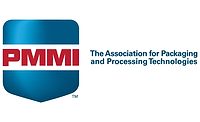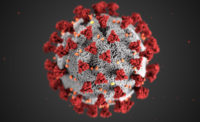Robotics and Automation for the Food Industry

Robots have changed manufacturing in almost every industrial sector and have increased efficiency and product consistency. However, until recently, food manufacturing has been an exception to this trend. There are many reasons for this, but one of the most often cited is that, unlike most products, food products by their very nature differ significantly in consistency and shape. This presents a considerable challenge to automated processing procedures.
The Food Industry
The food manufacturing industry is one of the largest manufacturing sectors in most European countries. It represents some 13 percent of all manufacturing in the European Union, contributes approximately €900 billion to the economy and employs some 4 million people. It is a very diverse and fragmented industry with very large and very small manufacturers; however, the vast majority can be classified as small-to-medium-size enterprises (SMEs).
Food manufacturing and assembly is mainly performed manually, and this is particularly so in SMEs. Currently, some of the larger manufacturers use state-of-the-art automation; this is not as prevalent in SMEs, where both the technical infrastructure and spending on engineering research and development are significantly lower.
Food retail within Europe tends to be focused on a comparatively small number of major retailers; as a result, these retailers have a significant influence on product range and pricing. However, some general issues faced by food manufacturers include pressure to reduce costs, competition from non-European countries, demand for a greater variety of products, shorter lead times, increasing public awareness of food and hygienic standards and environmental legislation.
Current Manufacturing Procedures
The food manufacturing industry has its origins in the household kitchen, as food is prepared in a factory that is essentially a larger version of the domestic environment. As production demand increased, larger companies saw the benefit of automation. This was particularly so for end-of-line packaging and palletizing. More recently, the availability of highly effective pick-and-place robots allowed automation to move upstream and undertake operations with actual food products on production lines. However, these systems are currently only generally installed on the high-volume, long-life, single-product lines. Smaller companies, which constitute over 90 percent of European food manufacturers, have been much slower to incorporate automation. The reasons for this include limited low-cost labor and expertise, market volatility, a belief that automation is unsuitable for the assembly of soft, variable, fragile, slippery/sticky natural products and the predominance of short-term orders, which discouraged capital investments in automation.
The above considerations have influenced the evolution of the industry, particularly in the predominant SME sector, resulting in a strong reliance on manual manufacturing procedures. But over the last decade or so, a number of market and other trends have emerged that seriously challenge the traditional manual-intensive manufacturing approach, including a decline in the availability of suitable, low-cost casual labor within the European Union, employment law and health and safety directives that put pressure on labor costs, a demand for assured hygienic products, which can mean removing human operators from production processes, and higher commodity prices. The good news for industry and consumers alike is that robotics technology has been steadily advancing to meet these and other challenges. Modern automation is more versatile than ever, which makes it worth a look for food manufacturers of almost all sizes.
Automation in Food Manufacture
The above drivers have led to a gradual uptake of automation within the sector. For products that are high volume, long life or a single product, hard or fixed automation solutions are appropriate. These can use either robots or combinations of simpler electromechanical devices. If products are regular in shape and well located, simple solutions will often suffice. However, if product localization is poor or product shapes vary considerably, the automation solution will usually be much more complex. But that’s changing. In recent years, a combination of robotics and electromechanical systems have shown they can automate processing of most food products.
Initially, automation in the food industry concentrated on end-of-line work (think computerized mechanical baggers). And robots excelled at it, but there was a demand for faster and more agile machines able to work further up the production line and provide rapid pick-and-place operations on individual food products. This challenge was met by the introduction of the Delta family of robots now available from a range of manufacturers. These robots are optimized for fast operation (100–120 picks per minute) with lightweight payloads (1–2 kg) and have been particularly successful in processing food products. Similarly, research from within both academia and industry has developed a broad range of end effectors able to grasp the vast majority of products found in the food industry.
The Future
Looking to the future, food manufacturing procedures will likely remain much the same, but the bias against automation has now largely disappeared. Manual operation will likely continue for particular markets and products, but this will be interspersed with islands of appropriate automation. The overall shape and nature of the industry will be determined by market forces, but the automation industry has an important role to play by providing technology that will ensure the sector continues to meet the demand for readily available, high-quality and affordable food products.
Perhaps the greatest challenge the food industry faces in implementing automation and robotics is finding enough engineers to underpin the adoption of advanced manufacturing techniques. Thus, schools, training centers and professional engineering institutions have an equally important role in creating a genuine 21st-century food manufacturing industry.
Steve Davis, Ph.D., is a lecturer in manufacturing automation and robotics at the University of Salford, UK.
Looking for a reprint of this article?
From high-res PDFs to custom plaques, order your copy today!








